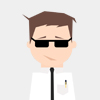
Top 10 Highest Flying Birds
Top 10 Highest Flying Birds
Here are the 10 highest flying birds, based on their recorded
altitude during migration or flight:
1. Rüppell's Vulture
2. Common Crane
3. Bar-Headed Goose
4. Whooper Swan
5. Alpine Chough
6. Bearded Vulture
7. Mallard
8. Northern Pintail
9. Bar-Tailed Godwit
10. Andean Condor
1. Rüppell's Vulture
Rüppell's vulture (Gyps rueppellii) is a large bird of prey that belongs to the family Accipitridae. It is named after the German explorer and ornithologist Eduard Rüppell, who first described it in 1837.
Here are some details about Rüppell's Vulture:
Habitat: Rüppell's vulture is native to Africa and is found in a range of habitats, including savannas, grasslands, and deserts.
Appearance: This vulture has a dark brown or blackish plumage, a featherless head and neck, and a sharp, hooked beak. It has a wingspan of up to 2.6 meters (8.5 feet) and can weigh up to 7.5 kilograms (16.5 pounds).
Diet: Rüppell's vulture is a scavenger that feeds on the carcasses of large mammals, such as antelopes and zebras. It has a strong digestive system that can handle bacteria and toxins that would be deadly to other animals.
Behavior: Rüppell's vulture is a social bird that roosts and feeds in groups. It is known for its exceptional flying ability and can soar at altitudes of up to 37,000 feet (11,300 meters), which is the highest recorded flight altitude of any bird.
Conservation status: Rüppell's vulture is listed as "Endangered" by the International Union for Conservation of Nature (IUCN) due to a rapid population decline caused by habitat loss, hunting, and poisoning from pesticides and veterinary drugs. Conservation efforts are underway to protect this species, including breeding programs in captivity and monitoring and enforcement of hunting and poisoning regulations.
Rüppell's vulture (Gyps rueppellii) has a rich history in African cultures and has played an important ecological role in the continent's ecosystem.
Here are some key historical facts about this bird:
Cultural significance: Rüppell's vulture has been depicted in art, folklore, and religious traditions of many African societies for centuries. In some cultures, it was considered a symbol of power and wisdom, while in others, it was viewed as a bad omen or a harbinger of death.
Ecological role: Rüppell's vulture is a keystone species in African ecosystems, playing a crucial role in scavenging and recycling nutrients from animal carcasses. Its strong digestive system is able to break down and neutralize bacteria and toxins that would be lethal to other animals, helping to prevent the spread of diseases and reducing pollution.
Decline and conservation: In recent decades, Rüppell's vulture populations have experienced a steep decline due to habitat loss, hunting, and poisoning from pesticides and veterinary drugs. This has led to widespread concern about the ecological and cultural impact of the vulture's decline, as well as efforts to protect the species.
Conservation efforts: Several conservation programs have been established to protect Rüppell's vulture, including captive breeding programs, habitat conservation and restoration, and public awareness campaigns. These efforts have helped to stabilize some populations, but more work is needed to ensure the long-term survival of this important species.
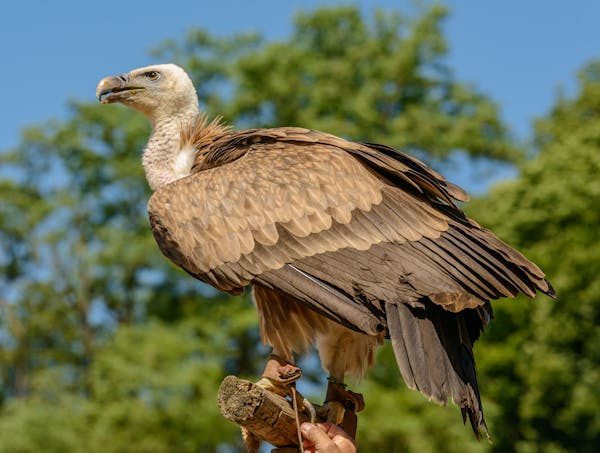
2. Common Crane
The Common crane (Grus grus) is a large bird that belongs to the family Gruidae.
Here are some details about the Common crane:
Habitat: The Common crane is found in wetland habitats such as marshes, bogs, and flooded fields across Europe and Asia.
Appearance: This bird has a long neck and legs, a gray body, and a red patch on its head. It has a wingspan of up to 2.4 meters (7.9 feet) and can weigh up to 5.5 kilograms (12 pounds).
Diet: The Common crane is an omnivore that feeds on a variety of plants, seeds, insects, and small animals such as rodents, frogs, and fish.
Behavior: The Common crane is a highly social bird that lives in flocks during the non-breeding season and forms monogamous pairs during the breeding season. It is known for its distinctive trumpeting call and elaborate courtship displays.
Migration: The Common crane is a migratory bird that travels long distances between its breeding and wintering grounds. It is known to fly at high altitudes, with some individuals recorded at heights of up to 33,000 feet (10,000 meters) during migration.
Conservation status: The Common crane is listed as "Least Concern" by the International Union for Conservation of Nature (IUCN) due to its large and stable population. However, it is threatened by habitat loss, hunting, and collision with power lines and wind turbines. Conservation efforts include habitat restoration and protection, as well as measures to reduce collision risks.
The Common crane (Grus grus) has a long history of interaction with humans.
Here are some key historical facts about this bird:
Cultural significance: The Common crane has played an important role in the cultures of Europe and Asia for thousands of years. It has been depicted in art, literature, and mythology, and was revered by many ancient societies for its beauty, grace, and symbolism.
Hunting: The Common crane has been hunted for its meat, feathers, and bones for thousands of years. In some cultures, it was considered a delicacy and a status symbol, and its feathers were used for decoration and ceremony.
Decline and protection: The Common crane suffered a significant decline in population during the 19th and 20th centuries due to habitat loss, hunting, and poisoning from pesticides. In response, many countries implemented measures to protect the species, including hunting bans, habitat restoration, and captive breeding programs.
Recovery: Thanks to these conservation efforts, the Common crane population has rebounded in many parts of Europe and Asia, with some populations even increasing to historic levels. Today, the Common crane is considered a conservation success story and is celebrated as a symbol of hope and resilience.
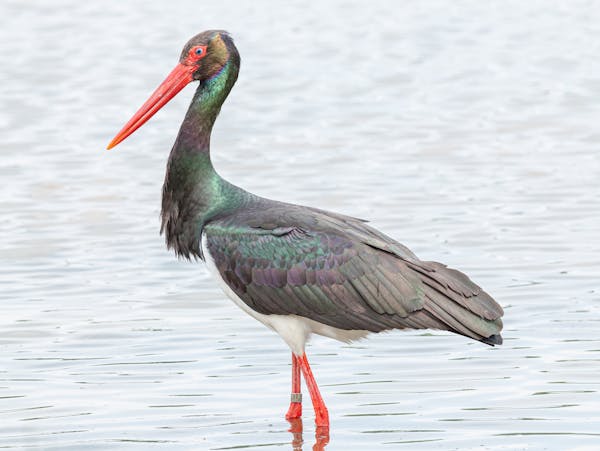
3. Bar-Headed Goose
The Bar-headed goose (Anser indicus) is a medium-sized waterbird that is found in high-altitude regions of Central Asia.
Here are some details about this species:
Habitat: The Bar-headed goose is primarily found in high-altitude wetlands, such as lakes, rivers, and marshes, in the Himalayan mountains and surrounding regions of Central Asia.
Appearance: This goose is primarily gray with a distinctive black and white barred pattern on its neck and upper breast. It has a yellowish bill and bright blue eyes. It has a wingspan of up to 1.5 meters (5 feet) and can weigh up to 2.7 kilograms (6 pounds).
Diet: The Bar-headed goose is a herbivore that feeds on a variety of aquatic plants, grasses, and agricultural crops.
Behavior: The Bar-headed goose is a social bird that typically forms large flocks during the non-breeding season and pairs up for the breeding season. It is known for its impressive migratory abilities, flying at altitudes of up to 8,000 meters (26,000 feet) across the Himalayas and other mountain ranges.
Migration: The Bar-headed goose is a long-distance migratory bird that travels between its breeding grounds in Central Asia and its wintering grounds in India and Southeast Asia. It is able to tolerate high altitudes and low oxygen levels during flight, which is a unique adaptation that allows it to cross some of the world's highest mountain ranges.
Conservation status: The Bar-headed goose is listed as "Least Concern" by the International Union for Conservation of Nature (IUCN) due to its large and stable population. However, it is threatened by habitat loss, hunting, and pollution. Conservation efforts include habitat protection, hunting bans, and public education campaigns.
The Bar-headed goose (Anser indicus) has played an important cultural and ecological role in the regions of Central Asia where it is found.
Here are some key historical facts about this bird:
Cultural significance: The Bar-headed goose has been revered in many cultures throughout its range, including in Tibetan Buddhism, where it is believed to symbolize purity, grace, and endurance. It has also been depicted in art, literature, and folklore.
Hunting: The Bar-headed goose has been hunted for its meat and feathers for centuries. In some cultures, it was considered a delicacy and a symbol of status, and its feathers were used for decoration and ceremony.
Migration: The impressive migratory abilities of the Bar-headed goose have been observed and documented for centuries. It has been reported to fly over the Himalayas and other high-altitude mountain ranges, which was long considered an impossible feat for birds.
Conservation: In recent decades, the Bar-headed goose has faced increasing threats from habitat loss, hunting, and pollution. Several conservation efforts have been implemented to protect the species, including the establishment of protected areas, hunting bans, and public education campaigns.
Scientific research: The Bar-headed goose has also been the subject of scientific research, particularly in the areas of animal migration and high-altitude physiology. Its unique adaptations to high-altitude flight and low-oxygen environments have provided valuable insights into the biology of extreme environments.
Overall, the Bar-headed goose has played a significant role in the cultural, ecological, and scientific history of Central Asia, and continues to be an important and fascinating species today.
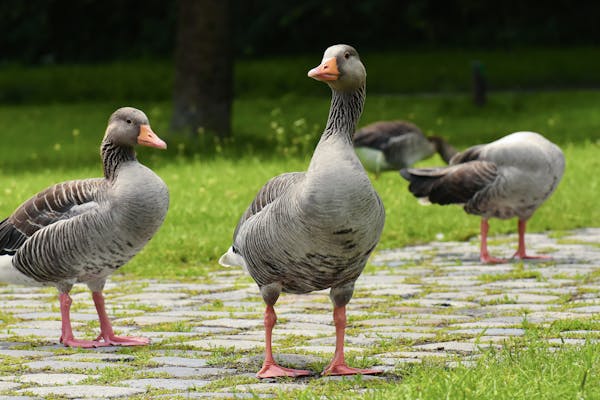
4. Whooper Swan
The Whooper swan (Cygnus cygnus) is a large waterbird that is found in wetlands and shallow lakes across northern Eurasia.
Here are some key details about this species:
Habitat: The Whooper swan is found in a variety of wetland habitats, including lakes, ponds, rivers, and coastal bays. It breeds in the boreal forests and tundra of northern Eurasia, and winters in milder regions to the south.
Appearance: This swan is one of the largest waterbirds in the world, with a wingspan of up to 2.4 meters (8 feet) and a weight of up to 15 kilograms (33 pounds). It is primarily white, with a long, slender neck and black bill. It has a distinctive honking call.
Diet: The Whooper swan is a herbivore that feeds on a variety of aquatic plants, grasses, and grains. It uses its long neck to reach deep into the water and mud to find food.
Behavior: The Whooper swan is a social bird that forms lifelong pair bonds during the breeding season. It is known for its elaborate courtship displays, which involve vocalizations, head bobbing, and wing flapping.
Migration: The Whooper swan is a long-distance migratory bird that travels between its breeding grounds in northern Eurasia and its wintering grounds in western Europe and Asia. It typically travels in family groups or flocks of up to several hundred birds.
Conservation status: The Whooper swan is listed as "Least Concern" by the International Union for Conservation of Nature (IUCN) due to its large and stable population. However, it is threatened by habitat loss, hunting, and pollution. Conservation efforts include habitat protection, hunting bans, and public education campaigns.
The Whooper swan (Cygnus cygnus) has a rich history, both culturally and scientifically.
Here are some key historical facts about this species:
Cultural significance: The Whooper swan has played an important role in the folklore, mythology, and art of many cultures throughout its range. In some cultures, it is believed to be a symbol of purity, grace, and beauty. Its feathers and down have been used for decoration, clothing, and bedding.
Hunting: The Whooper swan has been hunted for its meat, feathers, and down for centuries. In some cultures, it was considered a delicacy and a symbol of status. Hunting pressure has declined in recent years due to conservation efforts.
Scientific research: The Whooper swan has been the subject of scientific research in various fields, including ornithology, ecology, and animal behavior. Its migration patterns, breeding biology, and social behavior have been studied extensively.
Conservation: The Whooper swan is considered to be a species of least concern by the International Union for Conservation of Nature (IUCN), although populations in some regions are declining due to habitat loss, hunting, and pollution. Several conservation efforts have been implemented to protect the species, including the establishment of protected areas, hunting bans, and public education campaigns.
Overall, the Whooper swan has played an important cultural and ecological role throughout its range, and continues to be an important and fascinating species today. Its beauty, grace, and adaptability make it a valuable part of the natural world.
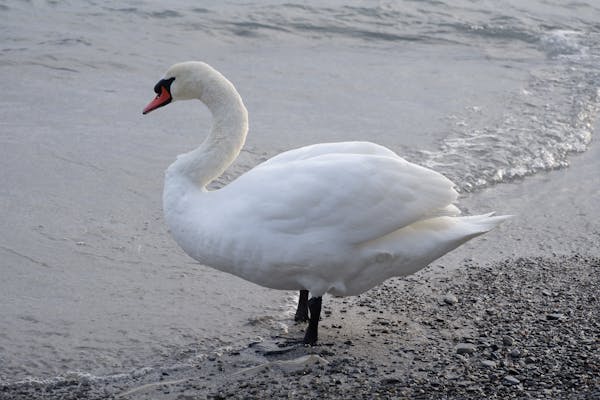
5. Alpine Chough
The Alpine chough (Pyrrhocorax graculus) is a bird species that belongs to the crow family. It is found in high-altitude mountain regions across Europe and Asia.
Here are some key details about this species:
Appearance: The Alpine chough is a medium-sized bird with black plumage and a yellow bill. It has a distinctive curved shape to its bill, which is adapted for digging into the soil in search of food. It also has red legs and feet, and a white patch on its wings that is visible in flight.
Habitat: The Alpine chough is found in rocky, high-altitude mountain regions above the treeline. It is often found near snowfields and glaciers, and can be seen flying and nesting on steep cliffs.
Diet: The Alpine chough is an omnivore that feeds on a variety of foods, including insects, seeds, berries, and carrion. It is known for its ability to dig through snow and soil to find insects and other invertebrates.
Behavior: The Alpine chough is a social bird that forms large flocks during the non-breeding season. It is known for its acrobatic flight, which involves fast, twisting maneuvers through the air. It is also known for its vocalizations, which include a variety of calls and whistles.
Breeding: The Alpine chough breeds in colonies on steep cliffs, typically laying 3-5 eggs in a nest made of grass, moss, and twigs. Both parents incubate the eggs and care for the young.
Conservation status: The Alpine chough is listed as "Least Concern" by the International Union for Conservation of Nature (IUCN) due to its large and stable population. However, it is threatened by habitat loss, disturbance, and hunting in some regions. Conservation efforts include habitat protection, public education campaigns, and monitoring of populations.
Overall, the Alpine chough is a fascinating and adaptable bird species that is well-suited to life in high-altitude mountain regions. Its behavior and ecology make it an important part of alpine ecosystems, and a valuable subject of study for scientists and birdwatchers alike.
The Alpine chough (Pyrrhocorax graculus) has a long and rich history in human culture, particularly in mountainous regions of Europe and Asia.
Here are some key historical facts about this species:
Folklore: The Alpine chough has been the subject of many folktales and legends throughout its range. In some cultures, it is believed to bring good luck and protection to mountain climbers and travelers. In others, it is associated with death or bad omens.
Hunting: The Alpine chough has been hunted for its meat, feathers, and eggs in many regions throughout its history. It was also sometimes viewed as a pest, particularly by farmers who believed it would damage crops or spread disease.
Scientific research: The Alpine chough has been the subject of scientific research for many years, particularly in the fields of ecology, behavior, and ornithology. Its adaptation to high-altitude environments, social behavior, and vocalizations have been studied extensively.
Conservation: The Alpine chough is considered to be a species of least concern by the International Union for Conservation of Nature (IUCN), although it is threatened by habitat loss and disturbance in some regions. Conservation efforts have been implemented in some areas to protect its habitat and monitor populations.
Overall, the Alpine chough has played an important role in human culture and ecology for centuries. Its beauty, adaptability, and acrobatic flight make it a fascinating subject of study for scientists and birdwatchers alike.
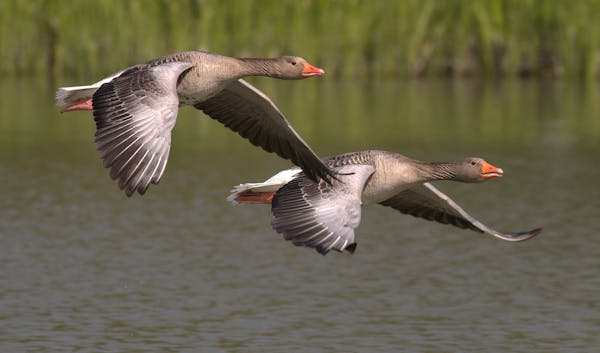
6. Bearded Vulture
The bearded vulture (Gypaetus barbatus), also known as the lammergeier, is a large bird of prey that belongs to the vulture family.
Here are some key details about this species:
Appearance: The bearded vulture is a distinctive bird with a wingspan of up to 2.8 meters (9.2 feet). It has a dark brown or black plumage and a white head and neck. It also has a distinctive, feathered "beard" of yellowish-orange feathers on its chin.
Habitat: The bearded vulture is found in high-altitude mountain regions across Europe, Asia, and Africa. It typically nests on steep cliffs and can be found in rocky, rugged terrain.
Diet: The bearded vulture is an opportunistic scavenger that feeds on a variety of foods, including bones, carrion, and occasionally live prey. It is known for its ability to break open large bones by dropping them from a height onto rocks.
Behavior: The bearded vulture is a solitary bird that is typically seen alone or in pairs. It is known for its soaring flight, which involves long periods of gliding and circling in search of food. It is also known for its distinctive vocalizations, which include whistles, grunts, and hisses.
Breeding: The bearded vulture typically breeds once per year, laying a single egg in a nest made of twigs and grass. Both parents incubate the egg and care for the young, which fledge after about 4 months.
Conservation status: The bearded vulture is listed as "Near Threatened" by the International Union for Conservation of Nature (IUCN) due to habitat loss, hunting, and poisoning in some regions. Conservation efforts include habitat protection, public education campaigns, and monitoring of populations.
Overall, the bearded vulture is a remarkable bird species that is well-adapted to life in high-altitude mountain regions. Its unique appearance, behavior, and ecology make it a fascinating subject of study for scientists and birdwatchers alike.
The bearded vulture, also known as the lammergeier, has a long and storied history in human culture, particularly in mountainous regions of Europe, Asia, and Africa.
Here are some key historical facts about this species:
Folklore: The bearded vulture has been the subject of many folktales and legends throughout its range. In some cultures, it is believed to be a powerful symbol of strength, freedom, and the natural world. In others, it is associated with death or bad omens.
Hunting: The bearded vulture has been hunted for its feathers, which were used in traditional clothing and jewelry. It was also sometimes viewed as a pest, particularly by farmers who believed it would damage livestock or spread disease.
Scientific research: The bearded vulture has been the subject of scientific research for many years, particularly in the fields of ecology, behavior, and conservation. Its feeding habits, bone-crushing abilities, and role in the ecosystem have been studied extensively.
Conservation: The bearded vulture is considered to be a species of "Near Threatened" by the International Union for Conservation of Nature (IUCN) due to habitat loss, hunting, and poisoning in some regions. Conservation efforts have been implemented in some areas to protect its habitat and monitor populations.
Reintroduction: The bearded vulture has been successfully reintroduced to some areas where it had been extirpated, such as the Alps and the Pyrenees. These efforts have involved captive breeding and release programs, as well as habitat restoration and public education campaigns.
Overall, the bearded vulture has played an important role in human culture and ecology for centuries. Its beauty, power, and ecological importance make it a fascinating subject of study for scientists and birdwatchers alike.
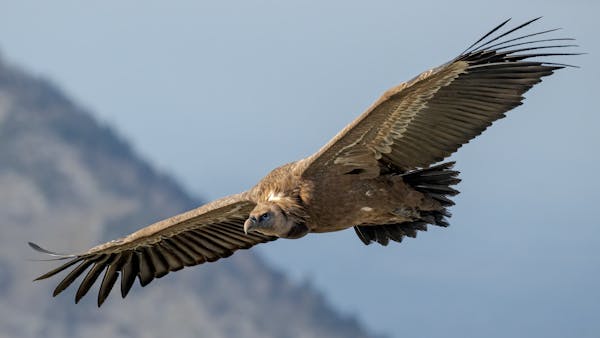
7. Mallard
The mallard (Anas platyrhynchos) is a common species of duck found throughout much of the world.
Here are some key details about this species:
Appearance: Male mallards, or drakes, have a distinctive green head, yellow bill, gray body, and white neck ring. Female mallards, or hens, are mottled brown and have an orange and brown bill.
Habitat: Mallards can be found in a variety of aquatic habitats, including ponds, lakes, rivers, and wetlands. They are also commonly found in urban parks and other human-modified habitats.
Diet: Mallards are omnivores that feed on a variety of foods, including aquatic plants, insects, crustaceans, and small fish.
Behavior: Mallards are social birds that often gather in large flocks during the non-breeding season. They are also known for their distinctive vocalizations, which include quacks, whistles, and grunts. During the breeding season, males perform elaborate courtship displays to attract females.
Breeding: Mallards typically breed in the spring and summer, nesting in shallow depressions on the ground or in vegetation near water. Females lay up to 12 eggs, which hatch after about 28 days.
Conservation status: The mallard is listed as a species of "Least Concern" by the International Union for Conservation of Nature (IUCN) due to its wide distribution, large population size, and ability to adapt to human-modified habitats.
Overall, the mallard is a familiar and adaptable species that is well-known for its distinctive appearance, behavior, and vocalizations. It is a common sight in many aquatic habitats around the world and is an important part of many human cultures and traditions.
The mallard (Anas platyrhynchos) has a long and fascinating history that spans many cultures and geographies.
Here are some key historical facts about this species:
Cultural significance: Mallards have been an important part of human culture and folklore for centuries. In many cultures, they are associated with fertility, abundance, and good luck. They have also been hunted for their meat and feathers, which were used in clothing and other products.
Domestication: Mallards were among the first species of ducks to be domesticated by humans, with evidence of domestication dating back more than 2,000 years in China. Domesticated mallards are known as "domestic ducks" or "Pekin ducks" and are raised for their meat, eggs, and feathers.
Natural history: Mallards are widely distributed throughout the world and are well-adapted to a variety of aquatic habitats. They are strong fliers and are capable of migrating long distances during the breeding and non-breeding seasons. They are also known for their unique mating behavior, which involves elaborate courtship displays by males.
Conservation: Mallards are considered to be a species of "Least Concern" by the International Union for Conservation of Nature (IUCN) due to their large population size, wide distribution, and ability to adapt to human-modified habitats. However, they are still threatened by habitat loss, hunting, and pollution in some regions.
Overall, the mallard is a species that has played an important role in human culture and ecology for many centuries. Its adaptability, widespread distribution, and cultural significance have made it an important subject of study for scientists, historians, and birdwatchers alike.

8. Northern Pintail
The Northern pintail (Anas acuta) is a species of dabbling duck that is found throughout much of the Northern Hemisphere.
Here are some key details about this species:
Appearance: Male pintails have a distinctive long, narrow, pointed tail that is dark brown or black in color, with a white underbelly and grayish-blue wings. Females have a mottled brown body and a shorter, pointed tail. Both sexes have a long, slender neck and a small, dark bill.
Habitat: Pintails breed in a variety of habitats, including marshes, prairies, and tundra wetlands. During the non-breeding season, they can be found in a variety of habitats, including wetlands, grasslands, and agricultural fields.
Diet: Pintails are omnivores that feed on a variety of foods, including aquatic plants, seeds, insects, and small invertebrates.
Behavior: Pintails are social birds that often gather in large flocks during the non-breeding season. They are strong fliers and are capable of migrating long distances during the breeding and non-breeding seasons. During the breeding season, males perform elaborate courtship displays to attract females.
Breeding: Pintails typically breed in the spring and summer, nesting on the ground in vegetation near water. Females lay up to 10 eggs, which hatch after about 23-26 days.
Conservation status: The Northern pintail is listed as a species of "Least Concern" by the International Union for Conservation of Nature (IUCN) due to its wide distribution, large population size, and relatively stable population trend.
Overall, the Northern pintail is a graceful and adaptable species that is widely distributed throughout the Northern Hemisphere. It is an important part of many wetland ecosystems and is a popular target for hunters and birdwatchers alike.
The Northern pintail (Anas acuta) has a long and fascinating history that spans many cultures and geographies.
Here are some key historical facts about this species:
Cultural significance: Pintails have been an important part of human culture and folklore for centuries. They are often associated with wetland habitats and are considered to be a symbol of purity and grace. In many cultures, they are also associated with hunting and sportsmanship.
Historical range: Pintails have a wide distribution throughout the Northern Hemisphere, with breeding populations in North America, Eurasia, and northern parts of Africa. They have also been reported as vagrants in parts of South America, Australia, and New Zealand.
Migration: Pintails are strong fliers and are known for their long-distance migrations. In North America, they breed in the northern prairies and tundra regions and migrate south for the winter, with some birds traveling as far as Central and South America. Eurasian populations also undertake long-distance migrations to wintering areas in the Mediterranean region, Africa, and South Asia.
Conservation: The Northern pintail is considered to be a species of "Least Concern" by the International Union for Conservation of Nature (IUCN), but populations have declined in some regions due to habitat loss and degradation, hunting, and other factors. The species is managed through hunting regulations and conservation programs in many regions to help maintain healthy populations.
Overall, the Northern pintail is a species with a rich history and cultural significance. Its adaptability, widespread distribution, and long-distance migrations make it an important subject of study for scientists, conservationists, and birdwatchers around the world.
9. Bar-Tailed Godwit
The bar-tailed godwit (Limosa lapponica) is a migratory wading bird that breeds in the Arctic regions of Europe, Asia, and North America, and winters along the coasts of Africa, Australia, and the Pacific Islands.
Here are some key details about this species:
Appearance: The bar-tailed godwit is a medium-sized wading bird with a long, straight bill and a relatively short neck. It has dark brown and gray plumage with a distinctive barred pattern on its tail, and a slightly upturned bill. During the breeding season, males develop a reddish-brown color on their heads, necks, and chests.
Habitat: Bar-tailed godwits breed in tundra and wetland habitats in the Arctic, and migrate to a variety of coastal habitats during the non-breeding season, including mudflats, estuaries, and sandy beaches.
Diet: Bar-tailed godwits are carnivorous and feed on a variety of invertebrates, including worms, mollusks, crustaceans, and insects. They use their long bills to probe the mud or sand for food.
Behavior: Bar-tailed godwits are highly migratory birds, with some individuals undertaking one of the longest known non-stop flights of any bird. During migration, they fly for several days without stopping, covering thousands of miles over open water. They are also known for their vocalizations, which include a loud, ringing "tu-tu-tu" call.
Breeding: Bar-tailed godwits typically breed in May and June, building their nests on the ground in open tundra habitats. Females lay 3-4 eggs, which hatch after about 3-4 weeks. The chicks are able to leave the nest soon after hatching and are raised by both parents.
Conservation status: The bar-tailed godwit is listed as a species of "Least Concern" by the International Union for Conservation of Nature (IUCN), but populations have declined in some regions due to habitat loss, hunting, and other factors. Conservation efforts are underway in many regions to protect breeding and wintering habitats, and to reduce disturbance from human activities.
Overall, the bar-tailed godwit is a remarkable and highly-adapted species that is well-suited for life in the harsh Arctic environment. Its long-distance migrations and unique adaptations make it an important subject of study for scientists, conservationists, and birdwatchers around the world.
The bar-tailed godwit (Limosa lapponica) has a long and fascinating history, as a species that undertakes one of the longest migrations of any bird in the world.
Here are some key historical facts about this species:
Traditional knowledge: Indigenous peoples of the Arctic, such as the Inuit and Yupik, have long observed and relied on bar-tailed godwits as a source of food and cultural significance. They have developed traditional hunting methods and knowledge of the species' movements and behavior.
Discovery: Bar-tailed godwits were first described by the Dutch zoologist Coenraad Temminck in 1820, based on specimens collected in Siberia. Since then, they have been the subject of much scientific study and observation.
Migrations: The long-distance migrations of bar-tailed godwits have been documented since the early 20th century, when radio tracking technology first became available. In the 1990s, scientists began using satellite tracking to study their movements in even greater detail.
Flight records: In 2007, a bar-tailed godwit named "E7" set a new record for the longest non-stop flight of any bird, traveling 7,257 miles (11,680 kilometers) from Alaska to New Zealand in just over 8 days. Since then, other individual birds have broken this record, with the current record holder having flown over 7,500 miles (12,000 kilometers) non-stop from Alaska to New Zealand.
Conservation: The bar-tailed godwit is considered to be a species of "Least Concern" by the International Union for Conservation of Nature (IUCN), but populations have declined in some regions due to habitat loss, hunting, and other factors. Conservation efforts are underway in many regions to protect breeding and wintering habitats, and to reduce disturbance from human activities.
Overall, the bar-tailed godwit is a species with a rich history and cultural significance, as well as remarkable physical and behavioral adaptations for its long-distance migrations. Its migrations continue to be the subject of ongoing research and fascination for scientists, conservationists, and birdwatchers around the world.
10. Andean Condor
The Andean condor (Vultur gryphus) is a large, majestic bird of prey found in the Andes mountains of South America. Here are some key details about this species:
Physical appearance: The Andean condor is one of the largest flying birds in the world, with a wingspan of up to 10 feet (3 meters) and a weight of up to 33 pounds (15 kilograms). It has black feathers and a distinctive ruff of white feathers around its neck, as well as a bald head and neck that can change color depending on its emotional state.
Habitat and range: Andean condors are found in the Andes mountains of South America, ranging from Venezuela in the north to Chile and Argentina in the south. They inhabit high-altitude regions, including rocky cliffs, canyons, and mountain slopes.
Diet and behavior: Andean condors are scavengers, feeding primarily on carrion from large animals such as guanacos, llamas, and cattle. They have keen eyesight and a strong sense of smell that allows them to locate food from great distances. They are also known for their distinctive courtship displays, which involve stretching their wings and performing aerial acrobatics.
Conservation status: The Andean condor is listed as a species of "Least Concern" by the International Union for Conservation of Nature (IUCN), but populations have declined in some regions due to habitat loss, hunting, and poisoning from lead ammunition used in hunting. Conservation efforts are underway in many regions to protect habitat and reduce human-caused threats.
Cultural significance: The Andean condor has long been a symbol of power, freedom, and spirituality in Andean cultures. It is featured prominently in art, literature, and mythology, and is considered a sacred animal by many indigenous peoples of the Andes. It is also the national bird of several countries in South America, including Colombia, Bolivia, Ecuador, and Chile.
Overall, the Andean condor is a remarkable bird with an important role in the ecosystems and cultures of the Andes mountains. Its conservation is important not only for the species itself, but for the broader biodiversity and cultural heritage of the region.
The Andean condor has a long and storied history in the cultures of the Andes mountains, where it has been revered for centuries as a symbol of power, freedom, and spirituality.
Here are some key moments in the history of this magnificent bird:
Pre-Columbian era: The Andean condor has been depicted in the art and mythology of Andean cultures for thousands of years, dating back to pre-Columbian times. It is often portrayed as a messenger between the world of the living and the world of the dead, and as a powerful deity associated with the sun and the sky.
Colonial era: With the arrival of Spanish colonizers in South America in the 16th century, the Andean condor's status as a sacred animal was threatened. European settlers viewed the bird as a threat to their livestock and hunted it aggressively, causing a decline in populations in many areas.
20th century: By the early 20th century, the Andean condor had become increasingly rare in many regions due to habitat loss, hunting, and poisoning from lead ammunition used in hunting. Conservation efforts were slow to develop, but by the 1970s, governments and conservation groups began to take action to protect the species and its habitat.
Present day: Today, the Andean condor is listed as a species of "Least Concern" by the International Union for Conservation of Nature (IUCN), thanks in part to conservation efforts that have helped stabilize populations in many regions. However, the species still faces threats from habitat loss, hunting, and other human-caused pressures, and ongoing conservation efforts are needed to ensure its survival.
Overall, the Andean condor's history is closely tied to the cultures and landscapes of the Andes mountains, and its conservation remains an important priority for the region's biodiversity and cultural heritage.
Blog Upload on - March 1, 2023
Views - 12462
